Enhanced version of the Nasa astronomy picture of the day website
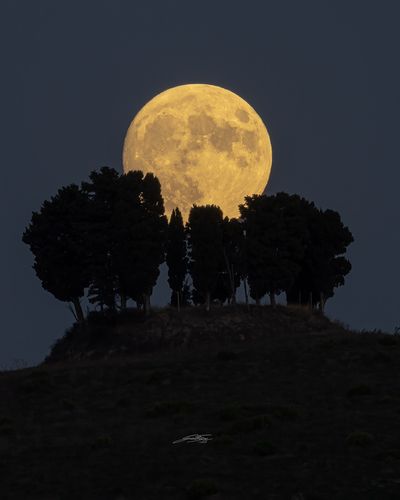
A Harvest Moon over Tuscany
For northern hemisphere dwellers, September's Full Moon was the Harvest Moon. Reflecting warm hues at sunset, it rises behind cypress trees huddled on a hill top in Tuscany, Italy in this...

Back from Bennu
Back from asteroid 101955 Bennu, a 110-pound, 31-inch wide sample return capsule rests in a desert on planet Earth in this photo, taken at the Department of Defense Utah Test and Training Range...
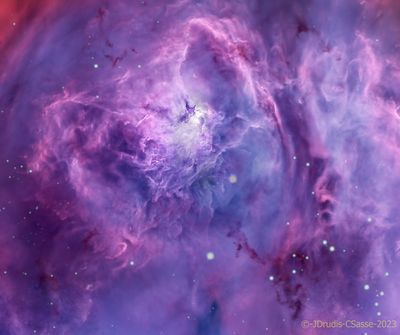
The Deep Lagoon
Ridges of glowing interstellar gas and dark dust clouds inhabit the turbulent, cosmic depths of the Lagoon Nebula. Also known as M8, The bright star forming region is about 5,000 light-years...

STEVE and Milky Way Cross over Rural Road
Not every road ends in a STEVE. A week ago, a sky enthusiast's journey began with a goal: to photograph an aurora over Lake Huron. Driving through rural Ontario, Canada, the forecasted sky show...

IC 4592: The Blue Horsehead Reflection Nebula
Do you see the horse's head? What you are seeing is not the famous Horsehead nebula toward Orion, but rather a fainter nebula that only takes on a familiar form with deeper imaging. The main...

Arp 142: The Hummingbird Galaxy
What's happening to this spiral galaxy? Just a few hundred million years ago, NGC 2936, the upper of the two large galaxies shown at the bottom, was likely a normal spiral galaxy -- spinning,...

A Ring of Fire Sunrise Solar Eclipse
What's rising above the horizon behind those clouds? It's the Sun. Most sunrises don't look like this, though, because most sunrises don't include the Moon. In the early morning of...

Afternoon Analemma
An analemma is that figure-8 curve you get when you mark the position of the Sun at the same time each day for one year. To make this one, a 4x5 pinhole camera was set up looking north in southern...

Cosmos in Reflection
During the day, over 12,000 large mirrors reflect sunlight at the 100-megawatt, molten-salt, solar thermal power plant at the western edge of the Gobi desert near Dunhuang, Gansu Province, China....

Tagging Bennu
The OSIRIS-REx spacecraft's arm reached out and touched asteroid 101955 Bennu on October 20, 2020, after a careful approach to the small, near-Earth asteroid's boulder-strewn surface. Dubbed...
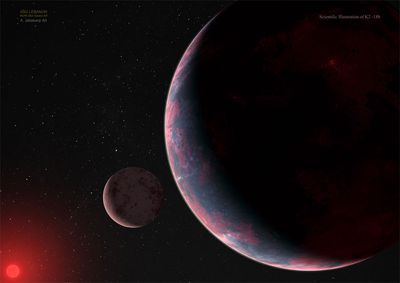
Methane Discovered on Distant Exoplanet
Where else might life exist? One of humanity's great outstanding questions, locating planets where extrasolar life might survive took a step forward in 2019 with the discovery of a significant...
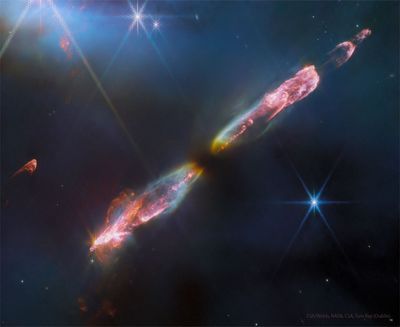
HH 211: Jets from a Forming Star
Do stars always create jets as they form? No one is sure. As a gas cloud gravitationally contracts, it forms a disk that can spin too fast to continue contracting into a protostar. Theorists...

The Red Sprite and the Tree
The sprite and tree could hardly be more different. To start, the red sprite is an unusual form of lightning, while the tree is a common plant. The sprite is far away -- high in Earth's...
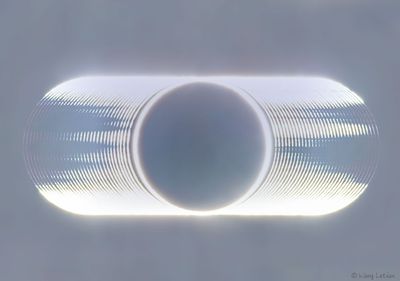
Moon Mountains Magnified during Ring of Fire Eclipse
What are those dark streaks in this composite image of a solar eclipse? They are reversed shadows of mountains at the edge of the Moon. The center image, captured from Xiamen, China, has the...
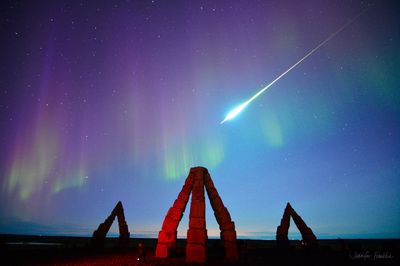
Fireball over Iceland
On September 12, from a location just south of the Arctic Circle, stones of Iceland's modern Arctic Henge point skyward in this startling scene. Entertaining an intrepid group of aurora hunters...
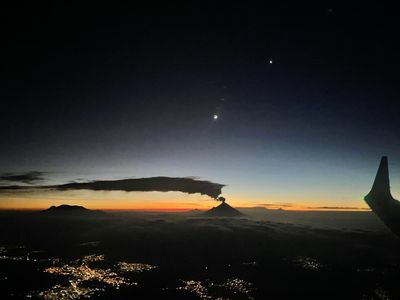
Venus, Moon, and the Smoking Mountain
Venus has returned, now appearing in planet Earth's predawn skies as a brilliant morning star. From a window seat on a flight to Mexico City, the bright celestial beacon was captured just...
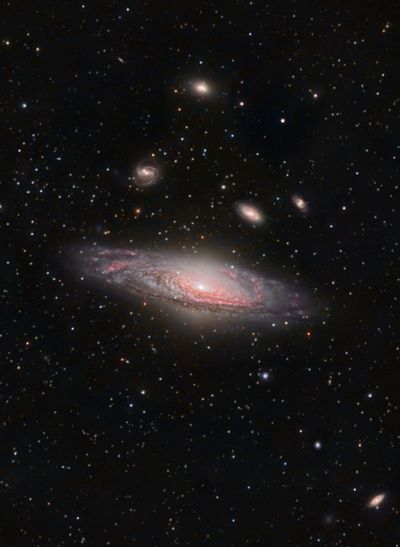
NGC 7331 and Beyond
Big, beautiful spiral galaxy NGC 7331 is often touted as an analog to our own Milky Way. About 50 million light-years distant in the northern constellation Pegasus, NGC 7331 was recognized early on...

NGC 4632: Galaxy with a Hidden Polar Ring
Galaxy NGC 4632 hides a secret from optical telescopes. It is surrounded by a ring of cool hydrogen gas orbiting at 90 degrees to its spiral disk. Such polar ring galaxies have previously been...
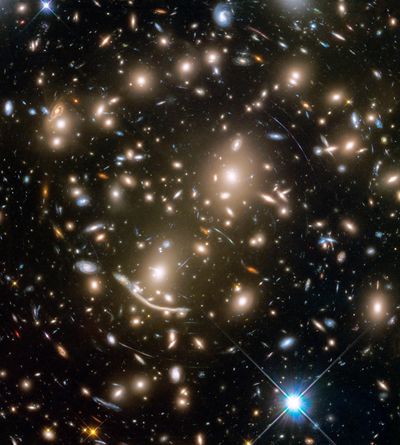
Galaxy Cluster Abell 370 and Beyond
Some 4 billion light-years away, massive galaxy cluster Abell 370 is captured in this sharp Hubble Space Telescope snapshot. The cluster of galaxies only appears to be dominated by two giant...
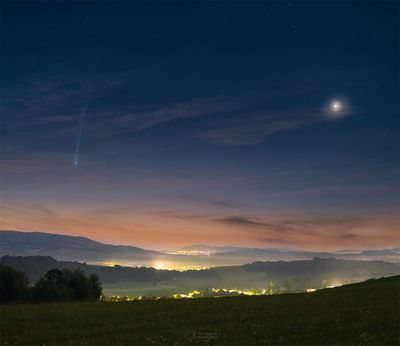
Beautiful Comet Nishimura
This scene would be beautiful even without the comet. By itself, the sunrise sky is an elegant deep blue on high, with faint white stars peeking through, while near the horizon is a pleasing tan....